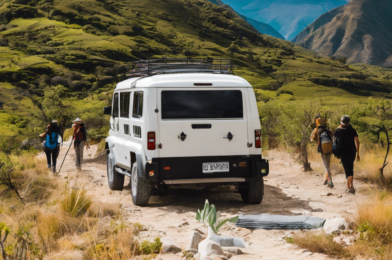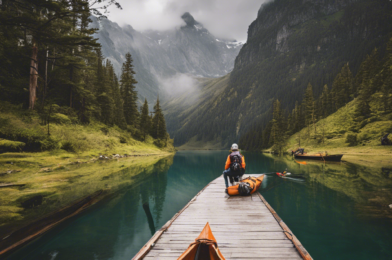Immerse yourself in the vibrant tapestry of cultural immersion, where the discovery of local traditions and customs unfolds like a captivating journey. There’s something special about delving into the heart of a new place and its people, and it’s an experience that leaves a lasting impression. Cultural immersion is more than just witnessing rituals or partaking in festivals; it’s about connecting with a community, understanding their values, and embracing their way of life. In our fast-paced world, where borders seem to be blurring, cultural immersion becomes our anchor, grounding us in the richness and diversity of our shared heritage. It is an exchange of ideas, a blending of perspectives, and a celebration of our collective humanity. When we immerse ourselves in a new culture, we don’t just observe from the sidelines; we actively participate in the local customs and traditions that define a community’s identity. This could mean joining in on time-honored rituals, partaking in culinary delights with age-old recipes, or celebrating festivals that hold a special significance for the locals.
The world is a tapestry of diverse cultures, each with its own unique traditions and customs. To truly experience a place and its people is to immerse oneself in their way of life, to walk in their shoes for a moment, and to see the world through their eyes. Cultural immersion is an invitation to leave our comfort zones and embrace the unknown, to challenge our preconceptions, and open our minds to new possibilities. It is a journey of self-discovery as much as it is a discovery of others, for in understanding the values and beliefs of another culture, we gain a deeper understanding of our own. Embracing local traditions and customs is like unlocking the secrets of a hidden treasure. It reveals the true essence of a place, one that goes beyond the physical landscape and speaks to the heart and soul of its people. It is in these moments of immersion that we find connection and common ground, despite our differences.
There is a certain magic that happens when we dive into a new culture, when we allow ourselves to be enveloped by the sights, sounds, and scents that are unique to a place. It could be the vibrant hues of a market in Marrakech, the rhythmic drumbeats of a Brazilian carnival, or the soothing aromas of freshly brewed tea in a Japanese tea ceremony. These sensory experiences evoke a sense of wonder and curiosity, inviting us to explore and understand the world from a different perspective. Cultural immersion is more than just a journey; it’s a transformation. It leaves an indelible mark on our lives, influencing the way we think, act, and interact with the world around us. We carry these experiences with us, and they become a part of our own personal narrative—a reminder that our planet is vast and varied, and that there is always more to discover and learn.
The benefits of cultural immersion extend far beyond the individual. In an increasingly globalized world, where international borders and collaborations are commonplace, having a deep understanding and appreciation of other cultures is invaluable. Whether it’s in the realm of business, politics, or social relationships, the ability to navigate different cultural contexts with empathy and openness is a powerful tool. It fosters mutual respect and understanding, breaks down barriers, and builds bridges between communities. In a world that often feels divided, cultural immersion is a powerful force for unity and collaboration, reminding us of our shared humanity and the beauty in our differences.
The journey of cultural immersion is a path less traveled by many, yet it offers rewards that surpass mere sightseeing. It is a journey of discovery, connection, and transformation. When we immerse ourselves in local traditions and customs, we not only gain a deeper understanding of the world, but we also open ourselves up to new possibilities and perspectives. This journey takes us to the heart of communities, where we find the essence of a place—its soul. It is here that we discover the true meaning of hospitality, the richness of heritage, and the power of shared experiences. In a world that often feels disconnected, cultural immersion is a reminder that we are all intertwined, our stories woven together in a beautiful tapestry of humanity. It is through this immersion that we find our common ground, and in doing so, we enrich our own lives and contribute to a more compassionate and understanding world.
The impact of cultural immersion is long-lasting and far-reaching. It not only enriches our personal lives but also has the potential to shape our global community. When we embrace local traditions and customs, we foster a deeper appreciation for the diversity that exists within our world. This appreciation extends beyond the boundaries of a single culture, encouraging us to seek out and value the unique contributions of all peoples. In doing so, we cultivate a sense of collective responsibility and stewardship for our planet and its varied inhabitants. Cultural immersion is a powerful catalyst for change, inspiring us to challenge our preconceptions, broaden our horizons, and embrace a more inclusive and compassionate worldview. It is through these immersive experiences that we lay the foundation for a more tolerant, empathetic, and interconnected society.
As we embark on cultural immersion journeys, let us remember that they are not merely vacations or tourist experiences. They are opportunities for personal growth, cultural exchange, and a deeper understanding of our world. Let us approach these journeys with open minds and hearts, eager to learn, connect, and contribute to the communities we visit. In doing so, we not only enrich our own lives but also play a small part in making the world a more welcoming and harmonious place. Cultural immersion is a gift that keeps on giving, and it is through our continued exploration and engagement that we ensure the preservation and celebration of local traditions and customs for generations to come. Together, let us embrace the beauty of diversity and the power of shared humanity.









